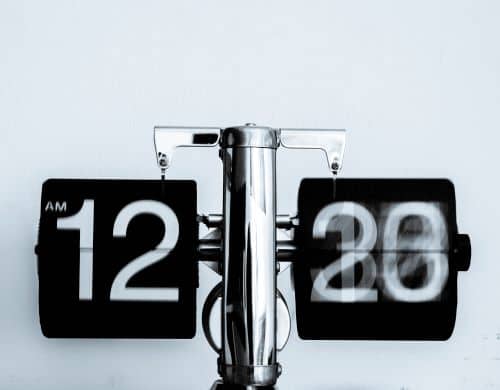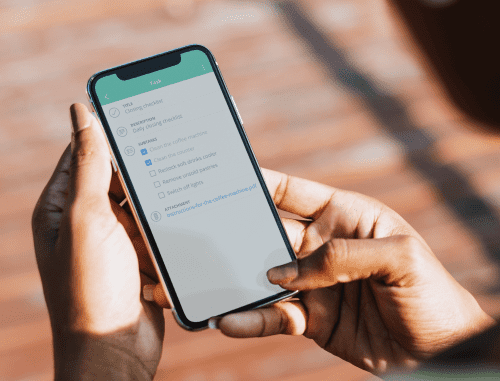10 Best Employee Time Tracking Software and Apps in 2024
An employee time tracking app can be a valuable tool for your business. Discove...
Every business needs some form of time tracking in place. It serves as the foundation of all payroll activities and provides insight into the efficiency, productivity, and success of your team.
In this article, we discuss time tracking best practices to help you make your system the best it can be. Here’s what we’ll cover:

Time tracking is the practice of recording information about when each employee in your business works during the day.
Your business may track just two numbers: when employees arrive at work and when they leave. Or, it may go more in-depth and track when they start and stop work on individual projects throughout the day.
For example, in a business that pays its employees by the hour (be it part-time or full-time), team members clock in when they start work in the morning and clock out when they stop work in the late afternoon.
That’s if your business operates during traditional hours. If you run a different kind of operation, here are our tips for creating the best work schedule for your team.
The business may also ask employees to clock in and out during breaks so that management can get a more accurate picture of actual time spent on the job.
On the opposite side of the coin, in a business that pays its employees a salary, time tracking is often used as a means to observe and control project costs.
Employees record the time they arrive at work and when they leave, as well as the amount of time they work on specific projects throughout the day. Those numbers are then incorporated into calculating the true cost of the job (and estimating expenses for future jobs).
Of course, however your business makes use of time tracking — the basic start/stop time or the more complicated time-on-task — the data that results is the foundation for calculating paychecks and the benefits your team members receive.
That’s why it’s essential to make your business’s time tracking system as efficient and effective as possible.

One of the most important parts of creating and maintaining an effective and successful time tracking system is abiding by all time tracking laws in your area.
At the federal level, the United States government established the Fair Labor Standards Act (FLSA), which set guidelines for things such as:
All businesses must comply with these regulations.
Most states also have their own time tracking laws. Practices differ from city to city and industry to industry, so it’s essential to talk to an attorney who is well versed in both labor law and the industry in which your business operates.
Military time displays the morning hours just like the standard format (e.g., 8:14 a.m., 10:37 a.m., 11:51 a.m., etc.).
But after 12:59 p.m., military time begins counting by adding an hour to twelve. For example, 1:00 p.m. in standard format would be 13:00 in military time.
You’ll notice that you don’t need the “p.m.” to indicate afternoon as you do with standard time format. That’s because the other one o’clock (in the early hours of the morning) is written 01:00.
Why is this important? Because it makes time tracking much easier if you have to do it manually.
We’ll use John as an example.
Let’s say John clocks in at 8:00 a.m. (standard format) and clocks out at 4:00 p.m. You’re going to have to do some roundabout math to calculate the hours worked since you can’t simply subtract one number from the other in this case.
Now, let’s say that John clocks in and out at the same time, but his time card displays the numbers in military format: 08:00 and 16:00.
Calculating his total time at work is now much easier because all you have to do is subtract eight from 16 to get eight. John worked eight hours that day.

To help simplify time tracking — and the payroll calculations that come from it — the federal government allows businesses to round work time to the nearest 10 or 15 minutes (depending on which increment your business uses).
For example, if your business tracks time in 10-minute increments, 5:01, 5:02, 5:03, and 5:04 would round down to 5:00 for payroll purposes, while 5:05, 5:06, 5:07, 5:08, and 5:09 would round up to 5:10.
Similarly, if your business tracks time in 15-minute increments, any time between 5:01 and 5:07.59 rounds down to 5:00, while any time between 5:08 and 5:14.59 rounds up to 5:15.
A good rule of thumb for all time tracking systems is to keep everything as simple as possible.
For the employees who use it every day, the entire process should only take a few seconds from start to finish.
It doesn’t matter if it’s punching a timesheet, swiping an ID card, typing a PIN, or scanning a fingerprint, anything more than 10 or 15 seconds is too long to be productive and can result in serious delays and bottlenecks at the start and end of the work day.
However you choose to structure your time tracking system, it’s essential that you create instructions and make them available to all employees.
Post specific instructions (i.e., how to use the equipment) at the clock-in/clock-out site so team members don’t always have to rely on their memory.
Then, publish more general information about the entire time tracking and payroll process in your employee handbook so team members can access it whenever they need it.

Modern business software offers much in the way of automating the time tracking process.
Software apps, like Sling, have built-in features that make it easy to:
With the right software in place, your business will be able to keep the time tracking process as simple as possible for everyone involved.
According to the Fair Labor Standards Act, businesses are required to keep time tracking data for a minimum of two years.
This applies to any records on which wage computations are based, including:
The federal government also requires businesses to keep any payroll records that result from the time tracking data — typically for more than two years.
Visit the Department of Labor’s website for more details.
Despite what many think, there’s more to time tracking numbers than just payroll.
Analyze the information periodically to uncover new ways to manage your team and optimize the way they work.
You might, for example, discover that your employees spend 15% of their time at work in meetings. Perhaps your business can find ways to reduce that percentage and provide team members with more time to focus on necessary projects.

The key to easy and accurate time tracking is Sling.
We built our app with the express purpose of simplifying and streamlining every aspect of your scheduling, time tracking, and attendance reporting activities.
A big part of that comes down to the onboard artificial intelligence that provides suggestions and solutions to help you reduce absenteeism and late arrivals and keep track of overlapping shifts and double-bookings.
Sling also lets your employees clock in and out right from their phones and even notifies you when an employee is running late or forgets to clock in.
For more free resources to help you manage your business better, organize and schedule your team, and track and calculate labor costs, visit GetSling.com today.
See Here For Last Updated Dates: Link
This content is for informational purposes and is not intended as legal, tax, HR, or any other professional advice. Please contact an attorney or other professional for specific advice.
Schedule faster, communicate better, get things done.